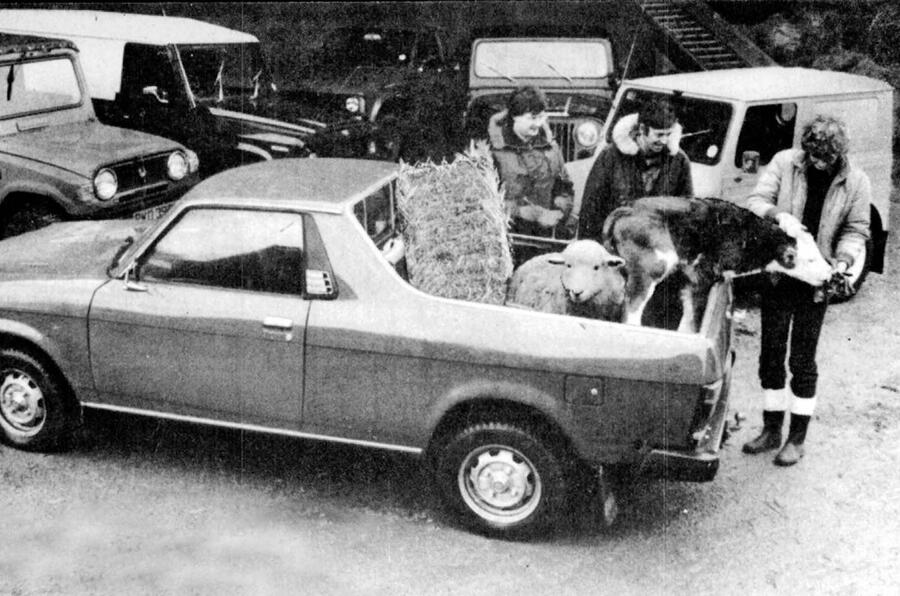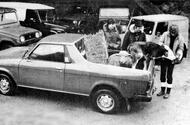Subaru MV pick-up was a competent farmhand
In 1982, Autocar gathered the six most significant imports on a farm in rural Kent to see what was what
When we write about off-road vehicles, it usually involves larking about in a quarry. But 4x4s aren’t just toys for motoring enthusiasts; for many people, they’re an absolute necessity for daily life and/or work.
Chief among those people are, of course, farmers. British farms were rapidly mechanised during World War II, and it was the native Land Rover that became the agricultural vehicle of choice as peace returned – and then dominated for decades.
In the late 1970s, though, it came under pressure from multifarious 4x4s arriving from abroad. So, in 1982, Autocar gathered the six most significant imports on a farm in rural Kent to see what was what.
Static tests were loading sheep, calves, hay bales and fertiliser bags; dynamic tests were towing a laden livestock trailer, crossing a sodden, snowy ploughed field and negotiating a steep and tortuous Downland route.
There was meant to be another – climbing a steep, muddy hill – but none of our 4x4s could actually get to the base, such was the slime at the gate. Our farmer judges were sure that a Landie would also have failed there, mind you.
Enjoy full access to the complete Autocar archive at the magazineshop.com
Predictably, Suzuki’s tiny LJ80 (or Jimny), with its mere 225kg payload, could hold the least: just three calves, two sheep or four bales (after a fight with the tailgate).
However, it “could be ideal as an economical, low-cost means of achieving quick access to all points of a large farm or estate, with its very real off-road capabilities. Its 797cc [four-pot] has only 41bhp – quite adequate for nippy runabout work but a little restrictive in harder-working applications.”
Modest fuel economy was on the upside, along with the price of just £3799 (£13,290 in modern money).
The Daihatsu F20 (or Taft) wasn’t much larger but could hold a fair bit more, with its 385kg payload, although it was “nothing like as refined, being less of a ‘fun’ vehicle”, and “more agricultural inside” – despite costing a much more substantial £5721 (£20,015).

“Nothing to get excited about if you want a vehicle to transport sheep or hay bales but more than adequate for a vehicle that might be called on to rescue a sheep from a snowy hilltop,” we concluded.
The Jeep Laredo (CJ-7) was a mixed bag: “It coped well with conditions on the farm, traversing our test field with scornful ease and leaping playfully up ridiculous inclines.
It proved one of the better towing vehicles and with automatic transmission was without doubt the easiest to drive.
It let us down only when required to start in thick, greasy mud at the foot of a steep ascent. However, it loses out on the farm due to its relatively small load area.”
We also had to remove its rear-mounted spare wheel in order to access its towbar.
Still, at £8499 (£29,735), “it deserves consideration for anyone wanting something prettier than a Land Rover but not quite as big and upmarket as a Range Rover [at £14,260]”.
For a few quid less, you could buy a Portaro Pampas, a Portuguese version of Romania’s ARO 24 (which incidentally had also spawned the original Dacia Duster of 1980).
We expected its steel bodywork to preclude that – indeed, our test car was already rusty – but the farmers didn’t care, noting that fertiliser would corrode aluminium anyway.
Its seats and ride were comfier than the Landie’s, its Daihatsu diesel four was impressively torquey and we barely even needed to engage 4WD when off-roading it.
All this plus its large load space – seven calves, eight sheep or nine bales – made it the farmers’ pick.
We preferred the £4485 (£15,690) Subaru MV (or Brat) pick-up, it being derived from an actual car. No leaf springs for us.
“This is the [4×4] that the farmer’s wife will love to drive into town,” we said, and despite its low ground clearance and fairly normal-looking tyres, “it simply flew through the glutinous mud”, thanks to its “light weight and high power” – of 79bhp…
Finally, and by far the best for carrying (no fewer than 22 bales), we had Toyota’s Mk3 Hilux, at £5560 (£19,455): “It’s rather like the MV but is more of a chore to drive over long distances. It will never get hung up on the deepest of rutted tracks, and the towing was a walkover.”
Was any better than the Landie, though? There was no mention of it – which perhaps speaks for itself.
Source: Autocar
